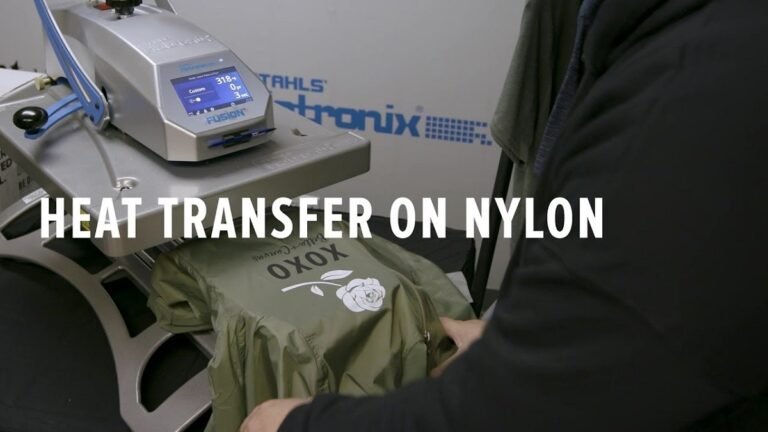How Does a Heat Press Machine Work?
A heat press machine is an essential tool for transferring designs, logos, and images onto a variety of surfaces, most commonly fabrics like t-shirts. It’s widely used in both personal crafting and professional printing industries because of its ability to produce high-quality, durable prints.
Understanding how a heat press machine works helps operators get the best results while ensuring the longevity of the equipment. Below is a detailed breakdown of the heat press machine’s working mechanism, its components, and the step-by-step process involved.
How Does a Heat Press Machine Work?
Now, let’s go step by step through how a heat press machine works in practice:
1. Preheat the Machine
The first step is to turn on the machine and set the required temperature on the control panel. The temperature settings depend on the type of material and transfer being used.
For example, heat transfer vinyl may require around 300-320°F (149-160°C), while sublimation might require temperatures between 350-400°F (177-204°C). The heat platen takes a few minutes to reach the desired temperature.
2. Prepare the Substrate
While the machine is heating up, prepare the substrate (e.g., t-shirt, hat, mug). The surface should be clean, flat, and free from moisture. For fabrics, it’s advisable to pre-press the item for a few seconds to remove any wrinkles or moisture, ensuring a smooth application.
3. Place the Transfer
Once the substrate is ready, position the transfer material (such as heat transfer vinyl or sublimation paper) on the substrate. If using HTV, make sure the design is placed correctly (shiny side up). For sublimation transfers, the printed side of the paper faces down against the material.
4. Adjust Pressure and Time
Depending on the material and transfer type, adjust the pressure using the pressure adjustment knob. Too much pressure can damage delicate items, while too little pressure may result in incomplete transfers. Set the timer according to the manufacturer’s instructions for the transfer material.
5. Apply Heat and Pressure
Once everything is in place, lower the heat platen onto the material by pressing the handle or engaging the lever. The machine will apply both heat and pressure for the pre-set time, ensuring the design is properly bonded to the substrate.
6. Lift the Platen and Remove the Transfer
After the timer signals completion, lift the heat platen and carefully peel off the transfer material. Whether you peel the material hot or cold depends on the type of transfer being used. For example, some heat transfer vinyl designs are “hot peel,” meaning they should be peeled immediately, while others require the design to cool before peeling.
7. Final Inspection
Once the transfer material is removed, inspect the final product for any areas that might have been missed or improperly transferred. If necessary, re-press certain areas, but this is usually rare when the correct settings are applied.
Factors that Affect the Quality of a Heat Press Transfer

- Temperature: Too much heat can scorch the material or cause colors to bleed, while too little heat may result in an incomplete transfer.
- Pressure: Incorrect pressure can lead to uneven transfers, with some parts of the design failing to bond properly.
- Time: The timing must be just right. Pressing for too long can cause the design to warp or fade, while too little time results in weak adhesion.
- Material Type: Different materials (cotton, polyester, ceramic, etc.) react differently to heat and pressure, so it’s essential to tailor the settings to the specific substrate being used.
Conclusion
A heat press machine works by applying the right combination of heat, pressure, and time to transfer designs onto various materials. Understanding the machine’s components and how to optimize its settings ensures high-quality, durable transfers.
Whether you’re using vinyl, sublimation, or other heat transfer methods, mastering the heat press process can help you create professional-grade custom products for personal or commercial purposes.





